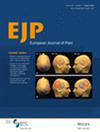Temporal Associations of Physical Activity With Subsequent Knee Pain in Individuals With Knee Osteoarthritis: An Ecological Momentary Assessment Study
Abstract
Background
Physical activity (PA) is a first-line treatment for knee osteoarthritis and provides benefits for functional improvement and pain relief. However, movement-evoked pain often hinders PA participation and long-term adherence. The relationship between PA and pain is not fully understood and may vary across individuals. We examined the temporal associations between PA and subsequent knee pain in individuals with knee osteoarthritis.
Methods
In a 10-day ecological momentary assessment (EMA) cohort study, PA was recorded using an Actigraph accelerometer; momentary knee pain intensity was rated on a numeric rating scale in responses to four daily text prompts. Linear mixed-effects models examined within-day and between-day associations between PA and knee pain, adjusting for age, sex and BMI.
Results
The sample included up to 454 observations across 10 days from 17 participants (age = 64 ± 7 years, BMI = 27 ± 4 kg/m2, 61% women), each consisting of a temporal pair of PA minutes and subsequent momentary pain. Within-day, greater moderate-to-vigorous PA (MVPA) minutes were associated with a subsequent increase in knee pain (adjusted β = 0.112, 95% CI: 0.023, 0.201, p = 0.014); while light-intensity PA showed no association with subsequent pain (adjusted β = −0.003, 95% CI: −0.011, 0.005, p = 0.461). Current-day MVPA and light-intensity PA minutes were not associated with next-day knee pain.
Conclusions
While MVPA may temporarily increase knee pain, its impact was transient. Light-intensity PA showed no association with pain, suggesting it may be a suitable alternative for those with movement-evoked pain. Understanding these temporal patterns can help guide tailored pain management and PA adherence strategies. Further research is needed to confirm these preliminary findings.
Significance Statement
Understanding the dynamic relationship between PA and knee pain is crucial for optimising the management of knee OA. This exploratory study offers new insights by leveraging high-frequency data to examine the intra- and inter-day associations of MVPA and light-intensity PA with subsequent knee pain. The preliminary findings demonstrate that MVPA may lead to transient pain increases, while light-intensity PA is not associated with pain intensity. Identifying these PA-pain temporal patterns can inform personalised strategies for pain management and improving long-term activity adherence.


 求助内容:
求助内容: 应助结果提醒方式:
应助结果提醒方式:


